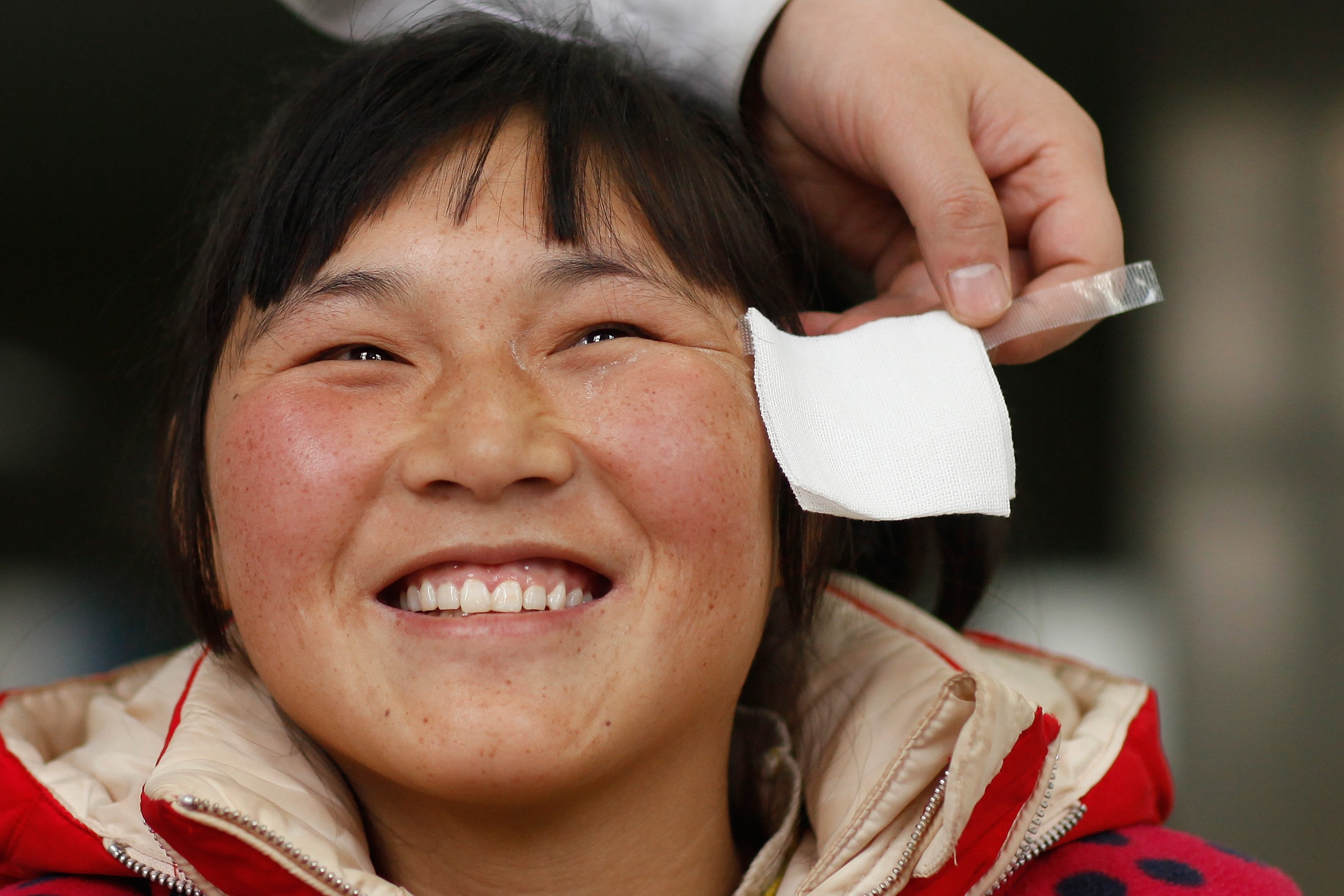Our work in China
The ethnic diversity and remoteness of communities makes eliminating avoidable blindness particularly challenging. Women are also more likely to suffer eye health issues than men and are less likely to access eye care services.
While increasing wealth has improved eye health services in big cities, access to these services reflect the city-country divide. Urban centres often have well-equipped and fully-staffed hospitals, while health care in rural areas is generally inadequate and unaffordable.
Up to 80% of China’s blind population lives in rural areas, yet about 80% of the country’s 36,000 eye doctors work in urban hospitals. Many patients in poor and rural areas of China still cannot afford a simple cataract surgery.
Cataract is the leading cause of blindness, accounting for almost half of all cases. Some 400,000 people become blind each year from cataract while around 7.58 million patients with cataract-related visual impairment or blindness still await surgery in China.
Diabetes has become an increasing problem, and diabetes-related eye disease such as diabetic retinopathy is on the rise. More than 116 million people have diabetes in China. This amounts to one in nine adults suffering from the disease, increasing their risk of becoming blind in the future.
Myopia is also emerging as a serious health burden for China. The number of students suffering myopia increases from 30% at primary school level, to 60% of junior high school, 80% of senior high school and 90% at university level. It is estimated that by 2050, about 66.8% of all people in China will suffer from myopia.
It is estimated that by 2050, about 66.8% of all people in China will suffer from myopia.

Our goals and achievements
Background in China
The Fred Hollows Foundation began working in China in 1998. For almost 10 years, The Foundation worked in Jiangxi Province on a project to prevent cataract blindness.
In June 2011, The Foundation officially registered with the Yunnan Provincial Civil Affairs Department, to establish an office in Kunming.
In 2012, a new five-year strategic plan was developed and The Foundation has worked in Yunnan, Inner Mongolia, Sichuan, Anhui, Xinjiang and other provinces and autonomous regions in central and western China.
In July 2013, The Fred Hollows Foundation established an office in Beijing to work on advocacy and assist the government to formulate policies that take effective measures to provide better eye care services for rural residents.
In March 2017, The Foundation was officially registered in China.
Our Programs
Over the past 22 years in China, The Foundation has adopted a holistic approach to end avoidable blindness, by setting up a high-quality comprehensive rural eye care model as well as advocating for its replication across China.
The model is developed on key learnings from The Foundation’s years of project experience to apply health systems with a strengthening approach and gender specific focus.
Strong partnerships have also been established at national and local community levels.
The Foundation is currently implementing comprehensive rural eye care projects in six provinces including Yunnan, Anhui, Xinjiang, Gansu, Hebei and Guangxi.
In 2023, The Foundation and its partners made great progress in key strategic areas in East Asia:
1,081,786
People screened.
106,050
Eye operations and treatments performed including cataract operations, surgeries to treat trachoma, diabetic retinopathy treatments and other sight saving or improving interventions.
72,687
Pairs of glasses distributed.
8,781
People trained including community health workers, surgeons, clinic support staff and teachers.
3,701,619
School children and community members educated in eye health and sanitation.
804
Facilities built, equipped or renovated.
The countries in Asia that The Foundation works in are Lao PDR, China, Vietnam, Cambodia, Philippines and Indonesia.
